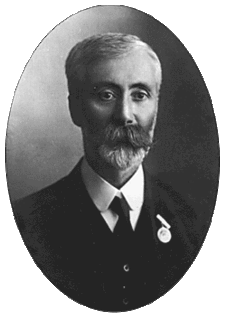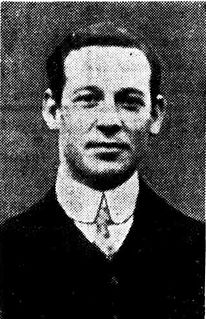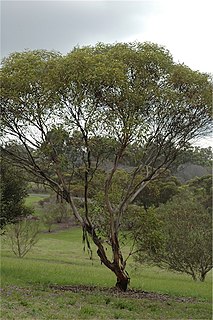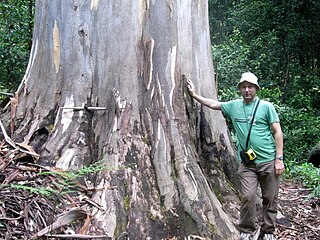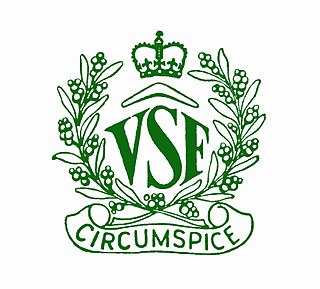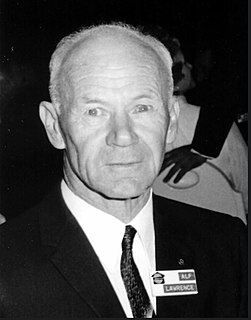Maxwell Ralph Jacobs (25 February 1905 – 9 October 1979) was an Australian forester.

A forester is a person who practices forestry, the science, art, and profession of managing forests. Foresters engage in a broad range of activities including ecological restoration and management of protected areas. Foresters manage forests to provide a variety of objectives including direct extraction of raw material, outdoor recreation, conservation, hunting and aesthetics. Emerging management practices include managing forestlands for biodiversity, carbon sequestration and air quality.
Jacobs was born in North Adelaide and attended Unley High School and then the University of Adelaide. He began his career as a forest assessor in the Australian Capital Territory in 1926 and was appointed chief forester in 1928. He completed further studies and served in the military during World War II. [1]
Unley High School, located in Netherby, is one of the largest public high schools in South Australia. In recent years the number of students enrolled typically ranges from 1,100 to 1,300, but in the early 1960s the school had a peak enrolment of 2,000 students.

The University of Adelaide is a public university located in Adelaide, South Australia. Established in 1874, it is the third-oldest university in Australia. The university's main campus is located on North Terrace in the Adelaide city centre, adjacent to the Art Gallery of South Australia, the South Australian Museum and the State Library of South Australia.

The Australian Capital Territory, formerly known as the Federal Capital Territory until 1938 and commonly referred to as the ACT, is a federal territory of Australia containing the Australian capital city of Canberra and some surrounding townships. It is located in the south-east of the country and enclaved within the state of New South Wales. Founded after federation as the seat of government for the new nation, all important institutions of the Australian federal government are centred in the Territory.
In 1932 Eucalyptus jacobsiana , specimens of which had been collected by Jacobs, was named in his honour by William Blakely. Other species collected and described by Jacobs include; Eucalyptus niphophloia , Eucalyptus camaldulensis Dehnh. var. pendula and Eucalyptus abbreviata all named in 1934. [2]

William Faris Blakely was an Australian botanist and collector. From 1913 to 1940 he worked in the National Herbarium of New South Wales, working with Joseph Maiden on Eucalyptus, Maiden named a red gum in his honour, Eucalyptus blakelyi. His botanical work centred particularly on Acacias, Loranthaceae and Eucalypts.
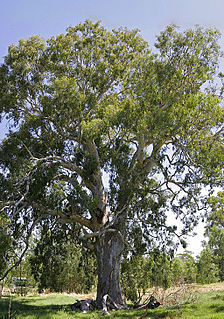
Eucalyptus camaldulensis, commonly known as the river red gum, is a tree that is endemic to Australia. It has smooth white or cream-coloured bark, lance-shaped or curved adult leaves, flower buds in groups of seven or nine, white flowers and hemispherical fruit with the valves extending beyond the rim. A familiar and iconic tree, it is seen along many watercourses across inland Australia, providing shade in the extreme temperatures of central Australia.
Following the war Jacobs was appointed as principal and lecturer in silviculture at the Australian Forestry School and remained there for the next fifteen years.

Silviculture is the practice of controlling the growth, composition, health, and quality of forests to meet diverse needs and values.
In 1955 The Growth Habits of the Eucalypts was published by the Commonwealth Government Printer, and consolidated much of Jacobs' work. The book became a standard text in all countries growing eucalypts around the world. [3]
In 1961 Jacobs was appointed as director-general of the Commonwealth Forestry and Timber Bureau and played a role in the formation of the Australian Forestry Council in 1964. After his retirement in February 1970, he continued to work occasionally as a consultant to organizations such as the Food and Agriculture Organization. [1]

The Food and Agriculture Organization of the United Nations is a specialized agency of the United Nations that leads international efforts to defeat hunger. Serving both developed and developing countries, FAO acts as a neutral forum where all nations meet as equals to negotiate arguments and debate policy.
Jacobs died on 9 October 1979 in Woden Valley Hospital in Canberra. A street in Wright is named in his honour. [1]
